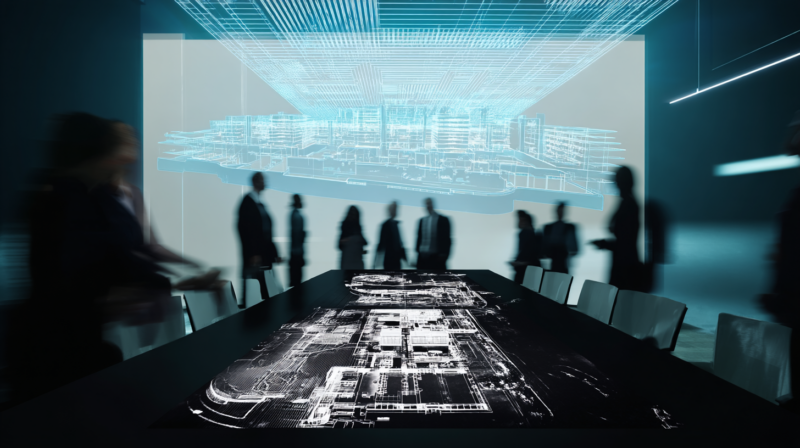Welcome back to Build Smarter Weekly, a special edition series from the Building Tomorrow newsletter.
In this series, we tackle the common mistakes, missed opportunities, and mindset shifts that make the difference between tech-filled buildings and truly future-ready environments. Whether you’re a developer, architect, GC, or building operator, these insights are designed to help you lead smarter, more aligned, and more impactful projects from day one.
Why Smart Building Success Starts with the Right Mindset
In the rush to make commercial buildings “smarter,” it’s easy to think technology is the starting point. But at Layer 10, we believe something fundamentally different:
Design comes first. Always.
Before the first sensor is selected…
Before the first cable is run…
Before the first piece of hardware is installed…
The project must be grounded in human-centric design thinking. Technology should be the natural outgrowth of thoughtful, intentional design — never the driver of it.
When you lead with design, technology becomes invisible, intuitive, and transformative. When you lead with tech, chaos tends to follow.
“Smart buildings aren’t created by stacking tech onto spaces. They’re born by designing spaces where technology enhances every human interaction.” — Ken Wilkinson, Founder & Managing Partner, Layer 10
Let’s explore why this distinction matters so much—and what it looks like in real projects.
Why Design-First Thinking is Critical
Every building—whether an office tower, hospital, or hotel—exists to serve people. If the technology inside doesn’t elevate the human experience, it’s missing the mark.
Design-first thinking ensures that:
-
Every system aligns with how people actually use the space.
-
Aesthetics and technology coexist without compromise.
-
Spaces are adaptable to changing needs, not locked into rigid tech systems.
-
Investments are made in outcomes, not just equipment.
When you build on this foundation, the technology feels effortless. Spaces work for people, not against them.
Unfortunately, the opposite is still too common: buildings cluttered with impressive-sounding systems that no one uses or understands. Why? Because tech was bolted on, not designed in.
When Tech Comes Last, It Shows
Imagine this scenario:
A new office tower is nearing completion. The architecture is stunning. The interiors are luxurious. But at the eleventh hour, the project team scrambles to “make it a smart building.”
They quickly add digital signage, a visitor management system, a few sensors, and a mobile app for building access.
The result?
-
The systems don’t talk to each other.
-
Tenants are confused about which apps to download.
-
Property managers wrestle with constant troubleshooting.
-
User adoption is low because the tech feels clunky and disconnected.
The space looks high-end, but the experience doesn’t match. And worse, retrofitting real integration later would be 3x more expensive than designing it right from the start.
Our Approach: Technology That Disappears Into the Experience
At Layer 10, we integrate technology as a natural extension of design intent, not an afterthought. Here’s what that looks like in practice:
✅ We collaborate with architects and designers during early concept stages—not after walls are framed.
✅ We map technology to workflows and user journeys, ensuring each solution fits the rhythm of life inside the space.
✅ We stay platform-agnostic, selecting the right technologies based on the design goals and human needs, not brand partnerships.
✅ We prioritize flexibility, so that spaces evolve as occupants’ needs change over time.
Technology doesn’t dominate our spaces—it disappears into them. It supports the design vision, enhances daily life, and stays ready for whatever comes next.
Why It Matters for CRE Professionals
Whether you’re a developer, architect, general contractor, or building operator, the pressure to deliver tech-enabled spaces is only growing.
But smart buildings aren’t built on better devices. They’re built on better decisions.
When you lead with design, you:
-
Reduce costly change orders and retrofits
-
Increase user satisfaction and tenant retention
-
Future-enable your assets for evolving tech landscapes
-
Strengthen project collaboration from day one
If you want your smart building to work—not just exist—you must start with design. Then, and only then, should technology enter the conversation.
“Lead with people. Follow with process. Integrate technology. That’s how future-ready spaces are born.” — Ken Wilkinson
Keep Building Smarter With Us
This philosophy of “Design First. Tech Second.” is a core pillar of what we teach inside the Build Smarter Challenge. It’s also central to every project we lead at Layer 10.
If you’re serious about designing spaces that are future-ready, human-centric, and operationally resilient, here’s what to do next:
🔹 Explore the full blog series: Build Smarter Weekly
🔹 Join our LinkedIn Live Masterclass on May 1: Designing Smarter Buildings: A Technology Strategy for CRE Professionals 📅
🔹 Partner with Layer 10: Schedule a Consultation
The future isn’t built on gadgets—it’s built on good decisions.
Let’s build smarter, together.
